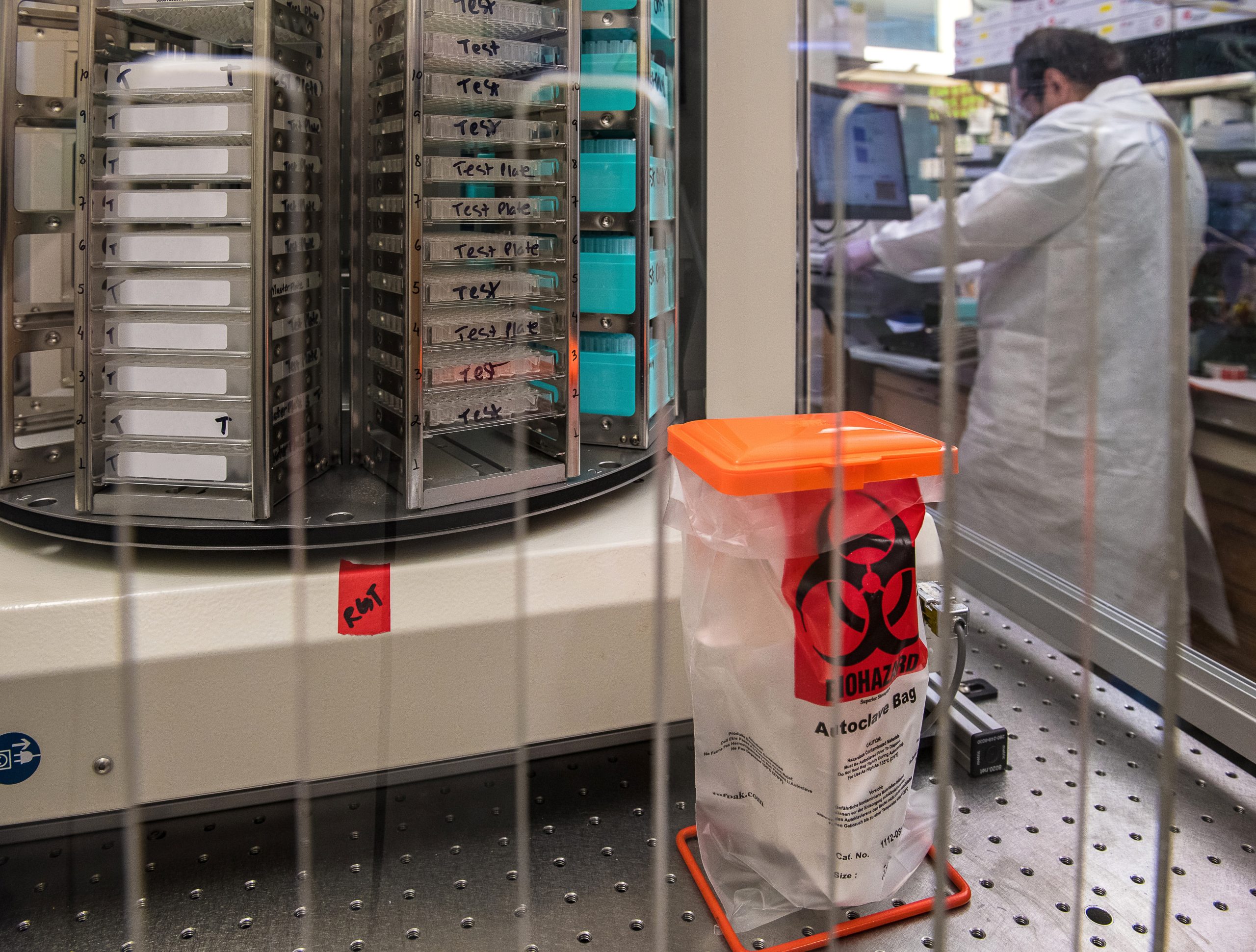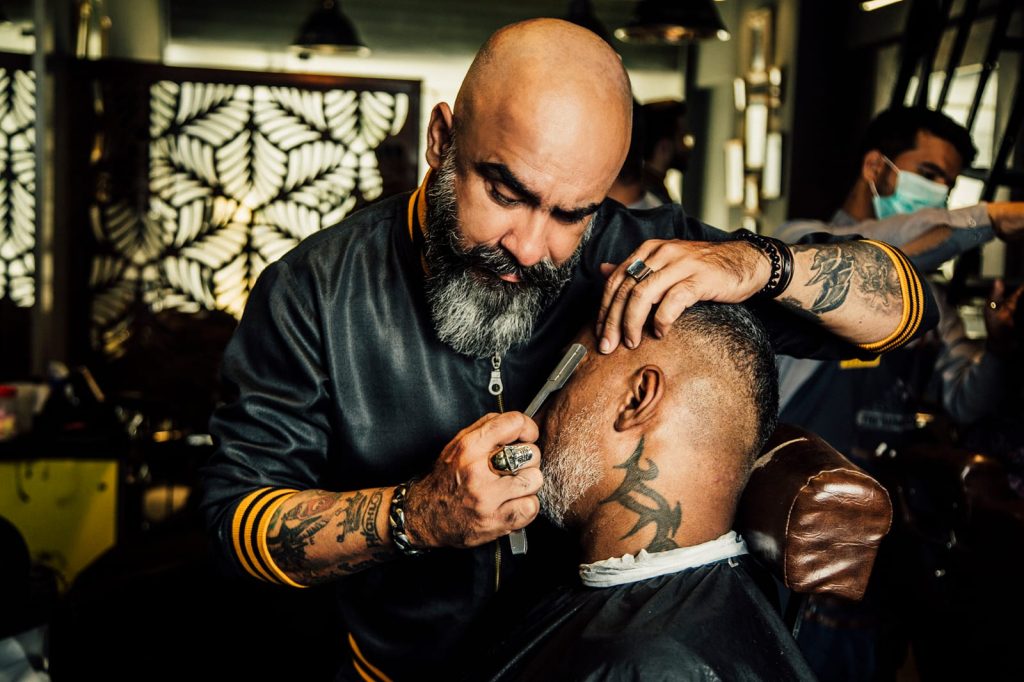Beauty Fitness
From Tai Chi to Cycling: Finding the Right Type of Exercise for Your Parkinson’s Journey

Are you in search of the perfect exercise routine that can help keep your Parkinson’s symptoms at bay? Look no further! With so many options available, it can be overwhelming to know where to start. However, from Tai Chi to cycling and everything in between, we’ve got you covered. In this blog post, we’ll explore some of the exercises that have been proven effective for managing Parkinson’s disease and help guide you towards finding a type of exercise that suits your needs and preferences. So let’s dive right in!
What is Parkinson’s Disease?
Parkinson’s Disease is a neurodegenerative disorder that causes the loss of dopaminergic cells in the substantia nigra, a region of the brain responsible for movement. Symptoms may include difficulty walking, trembling, rigidity, slow movement and impaired balance. There is no known cure for Parkinson’s Disease and current treatments only manage symptoms. However, there are various types of exercise that have been shown to improve mobility and overall quality of life in people with Parkinson’s Disease.
Tai Chi is a form of exercise that has been shown to improve balance and flexibility in people with Parkinson’s Disease. Tai Chi Helps To Strengthen The Muscles That Are Key To Balance
Cycling is another type of exercise that has been shown to improve mobility and overall quality of life in people with Parkinson’s Disease. Cycling Can Help With Muscle Strength And Endurance
Both Tai Chi and cycling require stamina, strength and agility as well as focus. These exercises can help to improve balance, flexibility, musculature and lung function in people with Parkinson’s Disease.
Types of Parkinson’s Disease
There is no one-size-fits-all approach to finding the right type of exercise for your Parkinson’s journey. What works well for one person may not be as effective for another. Some tips on finding the right exercise:
1. Consult with a physician or neurologist to get started on a tailored exercise plan that takes into account your individual medical history and condition.
2. Start with low intensity exercises and gradually increase the difficulty over time.
3. Warm up before starting any workout and cool down afterward.
4. Incorporate aerobic exercise such as brisk walking, jogging, swimming, cycling, rowing, and elliptical machines into your routine to improve cardiopulmonary health and reduce stress levels.
5. Strength training can help build muscle mass, which in turn supports better balance and function despite motor deficits caused by Parkinson’s Disease. Choose exercises that are safe for you to complete without causing additional harm to your joints or other areas of your body.
Tai Chi for People With Parkinson’s Disease
Tai Chi for people with Parkinson’s Disease has been shown to be an effective form of exercise. The Tai Chi movement is gentle and slow, which makes it a good choice for people with Parkinson’s Disease who are struggling to maintain their mobility. There are also specific movements in Tai Chi that are beneficial for people with Parkinson’s Disease, such as the stretching of the spine and the release of tension in the hands and feet.
Like cycling, Tai Chi can be done at home or in a park or other public space. It is important to find a class or teacher who understands your needs and can provide you with tailored instruction.
Cycling for People With Parkinson’s Disease
Cycling is a great form of exercise for people with Parkinson’s Disease and can be helpful in improving balance, coordination, and strength. It is also a relatively low-impact activity which can be enjoyable for those with PD.
There are a few things you should keep in mind when cycling to ensure that it is safe and comfortable for you:
1. Make sure you have the right gear. Appropriate biking attire includes clothing that protects you from the weather, including a helmet, gloves, sturdy bike shoes or boots, and a warm coat if needed.
2. Choose your cycling route wisely. Look for routes with smooth surfaces, few bumps, and plenty of turns to prevent falls.
3. Plan your ride ahead of time. Start by determining how long you want to ride and how many calories you want to burn; then create a plan based on that information. For example, if you’re aiming to burn 300 calories during your ride, Cyclists Corner provides an easy calorie calculator to help make this calculation.
Conclusion
Exercise is an important part of a Parkinson’s journey, and finding the right type of exercise for you can make all the difference. Tai chi is a great option if you are looking for something that is gentle on your joints and helps to improve your balance. Cycling is another fantastic way to get your daily exercise while improving cardiovascular health and reducing risk of heart disease. No matter what type of exercise you choose, be sure to consult with your doctor first to ensure that it is safe for you and best suits your needs.
Beauty Fitness
Glowing Skin Naturally: DIY Plant-Based Masks and Scrubs

Introduction
Why spend a fortune on store-bought skincare when your kitchen is already stocked with everything you need? With ingredients like sugar, lemon juice, avocado, cacao, and turmeric, you can create simple, all-natural treatments that nourish your skin—no chemicals required. Here are five easy, vegan beauty recipes inspired by Rawkin’ It Vegan Style that will leave your skin feeling fresh, soft, and radiant.
Glowing Skin Naturally: 5 DIY Plant-Based Face Masks and Scrubs You’ll Love

Image by: Yandex.com
1. Lemon Sugar Scrub: The Brightening Glow-Up
This scrub is a true skin-saver! Use it once or twice a week for silky-smooth, radiant skin. The sugar gently buffs away dead cells while locking in moisture, and the lemon juice—rich in vitamin C and citric acid—helps to brighten and even your skin tone.
You’ll need:
- Fine organic sugar
- Fresh lemon juice (enough to form a thick paste)
How to make: In a small bowl, mix sugar and lemon juice until it forms a thick paste. Gently massage it onto damp skin for a minute or two. It might feel a bit coarse, but it works wonders! Don’t forget your lips—it tastes like lemonade! Rinse off and pat dry for glowing, rosy skin.
2. Raw Cacao Face Mask: The Antioxidant Powerhouse
Give your skin a luxurious treat with this decadent mask. Raw cacao is rich in antioxidants and caffeine, which help tighten and rejuvenate your skin. Ground oats exfoliate, lemon juice brightens, and agave deeply moisturizes.
You’ll need:
- Raw cacao powder
- Ground organic oats
- Lemon juice
- Raw agave
How to make: Combine equal parts cacao powder and oats. Add the juice of half a lemon and just enough agave to make a thick paste. Apply to a clean face and neck, gently massaging it in. Relax for 20 minutes—just don’t lick your face! Rinse off, then finish with a light layer of coconut oil or your favorite moisturizer.
3. Avocado Mask: The Hydration Hero
If your skin feels dry or tired, this creamy avocado mask is your best friend. Packed with healthy fats and Omega fatty acids, it deeply nourishes and hydrates. Orange juice adds gentle exfoliation, while turmeric soothes inflammation, and olive oil locks in moisture.
You’ll need:
- 1 ripe avocado, mashed
- A few drops of orange juice
- A pinch of turmeric
- 1 Tbsp Extra Virgin Olive Oil
How to make: Mix all ingredients into a smooth paste. Apply evenly to your face and neck and relax for 15–20 minutes. Rinse off with lukewarm water, and enjoy your soft, supple glow.
4. Cucumber Mask: The Cooling Refresh
This cooling cucumber mask is as refreshing as it is simple. Cucumbers hydrate, soothe, and tone your skin while infusing it with silicon and chlorophyll for a healthy glow.
You’ll need:
- 1 cucumber, grated
- 1 warm, damp towel
How to make: Spread the grated cucumber over your face and neck. Place the warm towel on top and relax for 20–30 minutes. Rinse with lukewarm water, then sip on some cucumber juice while your skin feels reborn!
5. Banana Mask: The Moisture Boost
Bananas are nature’s beauty secret! Rich in potassium, vitamin C, and biotin, they hydrate, soften, and strengthen your skin, hair, and nails.
You’ll need:
- 1 ripe banana
- 2 Tbsp Extra Virgin Olive Oil
How to make: Mash the banana and olive oil into a smooth mixture. Apply to clean skin—it might get a little messy, but that’s part of the fun! Let it sit for 15–20 minutes, then rinse with lukewarm water and moisturize.
Your Skin, Naturally Radiant
Each of these easy, plant-based recipes gives your skin a healthy, natural boost—no fancy labels or harsh chemicals required. So grab your favorite ingredients, mix up some magic, and let your inner glow shine through.
Tips for Using DIY Plant-Based Masks
To get the best results from your DIY masks and scrubs, follow these tips:
- Always wash your face before applying a mask.
- Use fresh ingredients whenever possible for maximum benefits.
- Do a patch test to avoid any allergic reactions.
- Apply masks 1-2 times per week depending on your skin type.
- Moisturize after rinsing to lock in hydration.
Benefits of DIY Skincare
Using plant-based masks and scrubs regularly can improve your skin in many ways. They help remove impurities, reduce acne, and brighten your complexion. The natural antioxidants protect your skin from damage and support cell regeneration. DIY skincare is also cost-effective, eco-friendly, and allows you to control what goes on your skin. Best of all, it can be a relaxing self-care routine that promotes overall wellness.
Combining Masks for Best Results
For a more comprehensive skincare routine, you can combine masks and scrubs based on your skin’s needs. For example, use the coffee and coconut scrub to exfoliate, then follow with the avocado and banana mask for deep hydration. Mixing and matching plant-based recipes can help target multiple concerns like dryness, dullness, or acne, giving you glowing and healthy skin naturally.
Conclusion
Glowing skin naturally is easier than you might think with the help of DIY plant-based masks and scrubs. Honey and oatmeal, aloe vera and turmeric, avocado and banana, coffee and coconut oil, and strawberry with yogurt are all simple, effective, and safe options for healthy skin. By incorporating these natural remedies into your routine, you can reduce chemicals, nourish your skin, and enjoy a radiant glow. Embracing plant-based skincare allows you to care for your skin while connecting with the simplicity and benefits of nature.
Visit onegreenplanet.org and download the Food Monster App
Beauty Fitness
Quick Ways to Fix Hair Disasters at Home

Introduction
We’ve all experienced that moment of horror – a DIY haircut gone wrong, a styling experiment that backfired, or a product that left our hair looking anything but attractive. Hair disasters can strike when you least expect them, often right before important events or meetings. While nothing replaces professional expertise, there are several smart strategies you can employ to manage the situation until you can get to a professional. Here’s your essential guide to troubleshooting common hair emergencies and restoring your confidence while you wait for your appointment at the best salon in Karachi.
The “Too Short” Crisis: Creating Illusion of Length and Volume
When your haircut turns out shorter than expected, panic often sets in. However, the immediate solution lies not in trying to stretch your hair (which is impossible), but in creating texture and volume that distracts from the shortened length. Begin by washing your hair with a volumizing shampoo that’s free of heavy silicones and sulfates, as these can weigh hair down. While your hair is still damp, apply a texturizing spray or sea salt spray, focusing on the roots. Use your fingers to scrunch your hair upward, creating lift at the scalp.
As you blow-dry, use a round brush to lift sections at the crown, directing the airflow upward to build maximum body. For extremely short cuts that seem beyond repair, consider using a matte texturizing clay to piece out individual sections. This technique creates an intentional, edgy look that appears deliberate rather than mistaken. The psychology here is crucial: when hair looks intentionally textured and styled, people perceive it as a fashion choice rather than a hair disaster.
The “Uneven Cut” Emergency: Strategic Styling and Camouflage Techniques
Discovering that one side is shorter than the other can be particularly frustrating, especially when you have an important event approaching. The solution lies in strategic styling that either balances the appearance or makes the unevenness look intentional. If the length difference is minimal – less than an inch – you can often camouflage it simply by changing your hair part. Switch your usual part to the opposite side, which changes how hair falls and can mask slight discrepancies in length.
For more noticeable differences, create texture throughout your hair using a lightweight styling cream, then style your hair in a more textured, “lived-in” look that doesn’t rely on perfect symmetry. The controlled chaos of a properly executed textured style makes small variations in length appear intentional. Another effective technique is to create more volume on the shorter side by backcombing gently at the roots, then smoothing the top layer over it. This adds lift where you need it most and can help balance uneven sections temporarily.
The “Bad Color” Situation: Immediate Damage Control and Correction
At-home coloring mistakes represent some of the most challenging hair disasters, ranging from colors that are too dark to brassy, orange-toned results that look anything but natural. Your immediate response can prevent the situation from worsening and make the eventual professional correction easier. If you’ve ended up with color that’s too dark, don’t panic and immediately try to bleach it out. Instead, wash your hair several times with a clarifying shampoo, which can help lift some of the surface pigment. For best results, mix the clarifying shampoo with a dollop of baking soda to create a more potent color-lifting mixture.
For brassy orange or yellow tones that commonly occur when lightening hair, use a color-correcting shampoo. Blue shampoo neutralizes orange tones, while purple shampoo counteracts yellow tones. Leave the toning shampoo on for 3-5 minutes to allow the color-depositing pigments to work their magic. However, it’s crucial to avoid multiple coloring attempts in quick succession, as this can damage your hair further and create more complicated problems for your stylist to fix later. Sometimes, the best approach is to use the time before your professional appointment to intensely condition your hair, ensuring it’s in the best possible condition for the color correction process.
The “Product Overload” Predicament: Resetting and Reviving Your Hair
Using too much product can leave hair looking greasy, stiff, or laden with visible residue – a common problem when we’re trying to achieve a particular style and keep adding more product in frustration. The solution begins with a thorough cleansing ritual. Use a clarifying shampoo to remove buildup, and don’t be afraid to shampoo twice if necessary. The first wash breaks up the product, while the second wash cleanses the hair and scalp. For stubborn buildup, try an apple cider vinegar rinse: mix one part vinegar with two parts water, pour through hair, let sit for three minutes, then rinse thoroughly.
When styling after product overload, start with just water and a very small amount of product – about half of what you normally use. A pro tip: when using beard creams or shaving creams, remember that less is often more. The same principle applies to hair products – start small and add only if necessary. If your hair still feels heavy or looks greasy after washing, try a dry shampoo on clean, dry hair to absorb any residual oils and add volume without weight.
The “Frizzy or Unruly Hair” Challenge: Smoothing and Taming Techniques
Humidity or improper styling can turn manageable hair into a frizzy mess that seems to have a mind of its own, particularly in Karachi’s climate. Before reaching for heavy serums that can weigh hair down, try a multi-pronged approach. Start by applying a small amount of anti-frizz serum or hair oil to dry hair, but with a specific technique: rub the product between your palms until they’re evenly coated, then gently smooth over the hair surface, focusing on the mid-lengths and ends where frizz tends to be most noticeable. Avoid applying too much product near the roots, as this can weigh hair down and make it look greasy.
For more stubborn frizz, use a flat iron on small sections to smooth the cuticle, but always use a heat protectant spray first. Alternatively, for a heat-free approach, wrap your hair in a silk or satin scarf for 15-20 minutes to help calm frizz through gentle pressure. The smooth fabric helps realign the hair cuticles. At night, always sleep on a silk or satin pillowcase to prevent frizz from forming while you sleep. For emergency frizz control during the day, lightly dampen your hands with water and smooth them over frizzy areas the minimal water weight can help temporarily tame flyaways.
Beauty Fitness
Exploring Rishikesh: What to See While Doing Your Yoga Training

Introduction
Rishikesh, a sacred town nestled in the lower Himalayas and blessed by the holy Ganges River, is more than just a yoga destination it’s a complete spiritual and cultural experience. Every year, thousands of yogis from around the globe come here to participate in transformative programs like the 100 Hour Yoga Teacher Training in Rishikesh, the 200 Hour Yoga Teacher Training in Rishikesh, and the powerful Kundalini Yoga Teacher Training in Rishikesh. But while the training itself can be immersive, Rishikesh offers an abundance of experiences to explore during breaks, weekends, and free time.
From ancient temples to serene riverbanks, healing therapies, local cafés, and adventure sports like rafting in Rishikesh, the town is a vibrant blend of spirituality, nature, culture, and excitement. Here is a complete guide on what to see and do while undergoing your yoga training journey.
Exploring Rishikesh: What to See While Doing Your Yoga Training
1. Visit the Iconic Laxman Jhula and Ram Jhula
No visit to Rishikesh is complete without walking the legendary suspension bridges, Laxman Jhula and Ram Jhula. These iconic structures connect different parts of the town and offer mesmerizing views of the Ganges flowing beneath.
During your 100 Hour Yoga Teacher Training in Rishikesh or 200 Hour Yoga Teacher Training in Rishikesh, you can easily explore these bridges in your free time as they are close to most yoga schools.
What to Enjoy Here:
- Panoramic river and mountain views
- Temple bells ringing in the distance
- Local markets with spiritual souvenirs
- Riverside cafés and Ayurvedic stores
These bridges are also great spots for meditation or peaceful walks after your daily yoga sessions.
2. Parmarth Niketan & the Famous Ganga Aarti
The Ganga Aarti at Parmarth Niketan is one of the most spiritually uplifting experiences in Rishikesh. It is an evening ceremony filled with devotional songs, chanting, lamps, and sacred vibrations.
Students of all programs whether a Kundalini Yoga Teacher Training in Rishikesh or a short retreat like a 3 Days Yoga Retreat in Rishikesh, 5 Days Yoga Retreat in Rishikesh, or 7 Days Yoga Retreat in Rishikesh find this ceremony deeply healing.
Why You Should Attend:
- Enhances meditation and emotional cleansing
- Connects you to the spiritual energy of the Ganges
- Offers a sense of community and devotion
This ceremony becomes a meaningful ritual for many yoga students.
3. Explore the Beatles Ashram (Chaurasi Kutia)
Made famous by The Beatles during their stay in the late 1960s, this ashram is now a peaceful retreat surrounded by forests, murals, and meditation caves. It is a perfect place to reconnect with nature and inner silence.
What Makes It Special:
- Graffiti art inspired by The Beatles
- Silent meditation halls
- Forest pathways ideal for introspection
If you’re doing a Kundalini Yoga Teacher Training in Rishikesh, this serene spot beautifully complements your energy-based practices.
4. Adventure Activities: Rafting in Rishikesh
Rishikesh is the adventure capital of India, and rafting in Rishikesh is one of the most thrilling experiences you can try. It is a refreshing activity that perfectly balances the intensity of your yoga studies.
Benefits of Rafting During YTT:
- Releases built-up stress
- Recharges your energy between yoga sessions
- Enhances teamwork and confidence
- Creates unforgettable memories with fellow students
Many yoga schools even include rafting as part of weekend excursions.
5. Experience Natural Beauty at Neer Garh & Patna Waterfalls
During your free day or after class, visit Neer Garh Waterfall or Patna Waterfall for a refreshing retreat into nature. These waterfalls offer soothing sounds, clear waters, and lush greenery—perfect for meditation or grounding yourself after deep spiritual practices.
These spots are especially rejuvenating for students undertaking intense programs like a 200 Hour Yoga Teacher Training in Rishikesh or Kundalini Yoga Teacher Training in Rishikesh.
6. Attend a Sound Healing Course in Rishikesh
Rishikesh is not just about yoga; it is a holistic wellness hub offering ancient healing modalities. A Sound Healing Course in Rishikesh is a wonderful addition to your training journey.
What You Learn:
- Himalayan singing bowls
- Vibrational healing techniques
- Chakra balancing through sound
- Methods to integrate sound therapy into yoga teaching
Students often pair sound healing with shorter retreats or YTT programs for a complete mind–body–soul experience.
7. Enjoy Riverside Cafés and Healthy Ayurvedic Meals
Rishikesh is full of unique cafés and restaurants that cater to health-conscious travelers and yogis. During your YTT, you can explore:
- Organic vegan cafés
- Ayurvedic meal restaurants
- Rooftop cafés overlooking the Ganges
- Herbal tea stalls and smoothie bars
These eateries provide nourishing food that supports your yoga practice and detox journey.
8. Explore Temples and Spiritual Sites
Some of the must-visit temples include:
- Trayambakeshwar Temple
- Neelkanth Mahadev Temple
- Bharat Mandir
These sacred places help deepen your understanding of Indian spirituality and enhance the meditative benefits of your training.
9. Try Short Retreats: 3, 5, or 7-Day Yoga Experiences
If you are staying in Rishikesh for long-term training, it’s worth experiencing unique short retreats too.
- 3 Days Yoga Retreat in Rishikesh: Perfect for quick relaxation and basic yoga immersion.
- 5 Days Yoga Retreat in Rishikesh: A slightly deeper journey combining yoga, meditation, and nature exploration.
- 7 Days Yoga Retreat in Rishikesh: A week-long spiritual reset that includes sound healing, breathwork, Ayurvedic meals, and guided meditation.
These retreats act as refreshing breaks or extensions to your YTT journey.
10. Continue Your Practice With the Best Online Yoga Classes
Once your training or retreat ends, you can still stay connected to your teachers and community through the best online yoga classes offered by many Rishikesh schools.
These online programs include:
- Daily asana classes
- Pranayama and meditation sessions
- Philosophy and anatomy lessons
- Kundalini practices
- Sound healing workshops
This ensures that your learning and transformation continue long after you leave Rishikesh.
Laxman Jhula and Ram Jhula: The Heartbeat of Rishikesh
The twin suspension bridges—Laxman Jhula and Ram Jhula—are among Rishikesh’s most iconic landmarks. Stepping onto these bridges feels like stepping into the timeless charm of the city, where spirituality flows as freely as the river beneath.
During your 100 Hour Yoga Teacher Training in Rishikesh or 200 Hour Yoga Teacher Training in Rishikesh, these bridges become favorite spots to unwind, meditate, or simply enjoy the breathtaking views.
Conclusion
Exploring Rishikesh during your yoga training is a journey filled with spiritual experiences, natural beauty, deep healing, and cultural richness. Whether you’re participating in a 100 Hour Yoga Teacher Training in Rishikesh, a comprehensive 200 Hour Yoga Teacher Training in Rishikesh, or a profound Kundalini Yoga Teacher Training in Rishikesh, the town offers endless opportunities to expand your horizons.
With refreshing short retreats, ancient temples, adventure sports like rafting in Rishikesh, healing programs such as the Sound Healing Course in Rishikesh, and ongoing support through the best online yoga classes, Rishikesh becomes not just a place for yoga training but a life-changing spiritual experience.
-
Business2 years ago
Cybersecurity Consulting Company SequelNet Provides Critical IT Support Services to Medical Billing Firm, Medical Optimum
-
Business2 years ago
Team Communication Software Transforms Operations at Finance Innovate
-
Business2 years ago
Project Management Tool Transforms Long Island Business
-
Business2 years ago
How Alleviate Poverty Utilized IPPBX’s All-in-One Solution to Transform Lives in New York City
-
health2 years ago
Breast Cancer: The Imperative Role of Mammograms in Screening and Early Detection
-
Sports2 years ago
Unstoppable Collaboration: D.C.’s Citi Open and Silicon Valley Classic Unite to Propel Women’s Tennis to New Heights
-
Art /Entertainment3 years ago
Embracing Renewal: Sizdabedar Celebrations Unite Iranians in New York’s Eisenhower Park
-
Finance3 years ago
The Benefits of Starting a Side Hustle for Financial Freedom






























